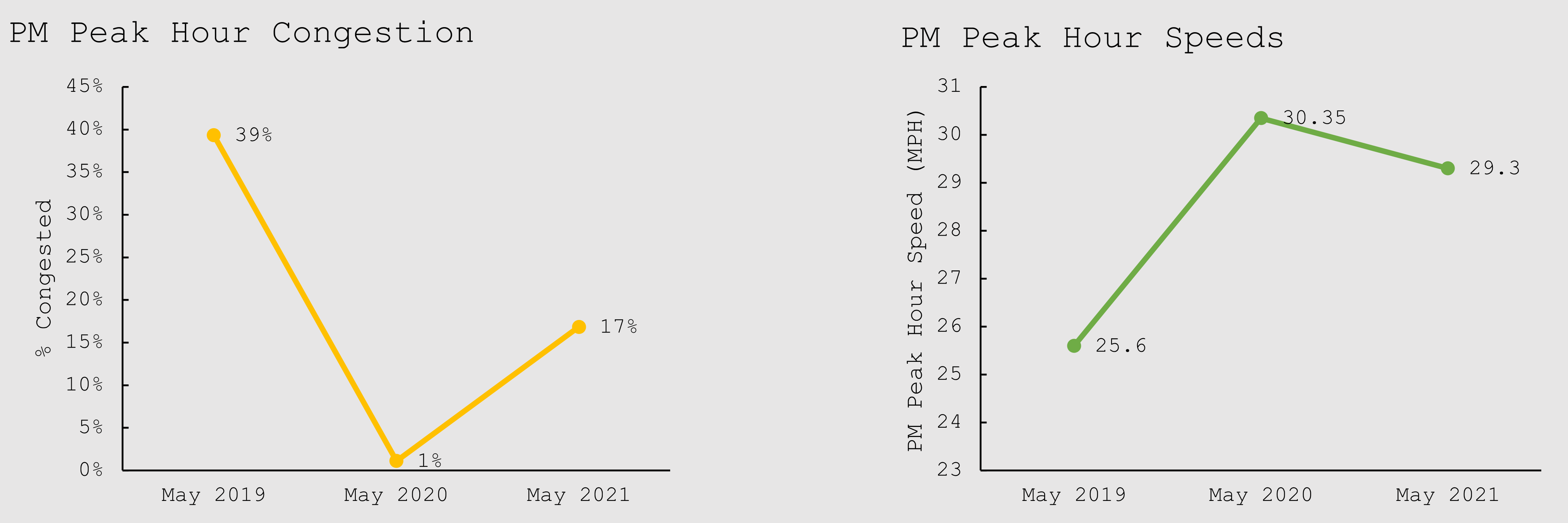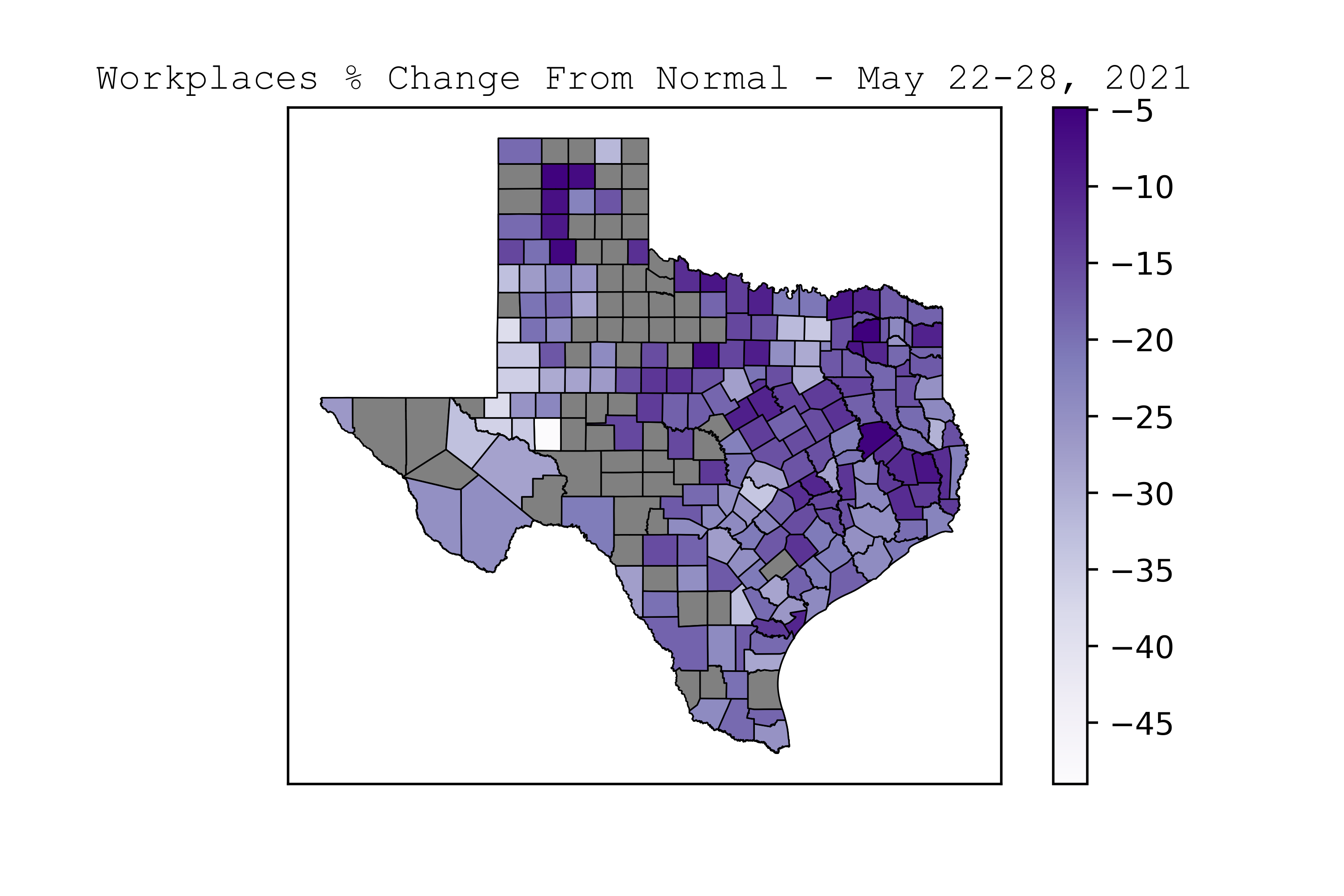Did COVID Fix Austin's Traffic Forever?
The traffic doomsday hasn’t come. Yet.
This time last year I think we all expected the temporary lull in traffic caused by the COVID-19 lockdowns was short-term. 15 months later, Austin is still well below normal traffic conditions.
Current Traffic
The week I’m writing this, Austin’s daily traffic volumes are at 84% of February 2020’s average which only 13% higher than the same time last year. This has less to do with roadway capacity and more to do with the economy. How much people have to travel to access employment and access goods/services is also a big driver of daily traffic volumes. Volumes were stagnant as was progress on the pandemic during mid to late 2020. During 2021 daily volumes creeped up slowly but not at the speed I’d expect after rolling out a highly effective vaccine.

The peak hour shows a similar trend. Only 17% of roadway segments where data is available are congested. Peak hour speeds on those corridors are only down 1 MPH since this time last year.

Why is traffic slow to return?
My hypothesis is that Austin has a higher percentage of jobs that can be worked remotely than most other cities. Austin has attracted many remote employees (and employers) during the pandemic as well. Google tracks this quite well using their mobility reports which use Google Maps data. The “workplaces” category is one I’ve been the most interested in as it will play a big role in that peak hour traffic.

Travis County is low on this measure where only it is still only 66% of normal February 2020 levels. Denton and Collin Counties are similar with 68% and 65%, respectively. The Permian Basin also shows lower than normal workplace activity but that is likely caused by a slow down in the oil & gas industry.
This magnitude of reduction in workplace activity in Travis, Collin, and Denton Counties is more likely driven by the ability to work remotely. The more “blue collar” rural counties (like Hopkins: 95%) where work cannot be done remotely are seeing almost normal workplace activity.
Will it stay this way?
Short-term? Possibly.
Long-term? No way. The region is growing at an incredibly fast clip, and Austin will come out of the post-pandemic world as an even more attractive option for internal migration. Our metropolitan planning organization, CAMPO estimates the region will double in population by 2045. This growth will overwhelm any short-term gains from those who work-from-home.
The Data
I get all of my traffic data from the Austin Open Data Portal. I have updating graphics and monthly takeaways on my Measuring COVID-19 post.